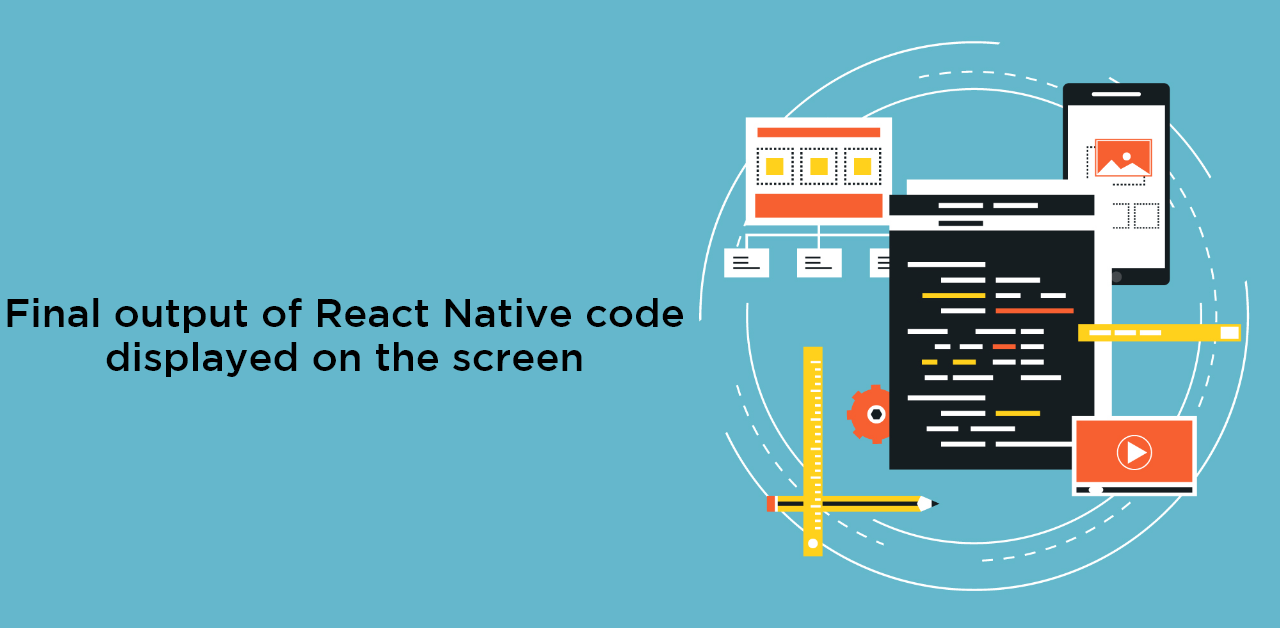5 Perplexing Interview Questions for React Native Developers
Posted on December 13, 2022 at 11:24 AM

With 38% of the market, React Native is the second-most used cross-platform mobile app development framework. The use of React Native is widespread, both in India and around the world.
React Native developers use the React Native framework to create user interfaces (UIs) for various platforms. They are front-end developers with a solid understanding of HTML, CSS, and JavaScript to create UI components.
In India, React Native developers typically make 900,000 rupees yearly or 361 rupees per hour. The starting salary for entry-level jobs is 500,000 rupees, while the average yearly salary for experienced workers is 1,800,000 rupees.
If you are also preparing for a React Native interview, reading this blog will benefit you immensely. It is because we have prepared a list of the top 5 most confusing interview questions for React Native developers.
Let us get started without any further delay!
What are the 5 most perplexing interview questions for React Native Developers?
Several companies are hiring React Native developers in India. As a result, the number of jobs for React Native developers is rising.
Since many compete for the same position, it has become mandatory to generously polish one’s skills and knowledge. It is only then that a person can bag an internship or job at the company of their interest.
Here, we have prepared a list of the top 5 most confusing interview questions for React Native developers. Kindly take a look at them and gauge your preparation level.
1. Can you differentiate between controlled and uncontrolled components in React Native?
Answer:
| Controlled Components | Uncontrolled Components |
| Any component bound to a value is considered a controlled component. And any changes made inside it will be dealt with in code using event-based callbacks. | It is comparable to conventional HTML form inputs, but the DOM handles the form data in this case. |
| It needs to keep up with its internal state. | It keeps up with its internal states. |
| The parent component is in charge of managing data. | In this case, the DOM itself controls the data. |
| The current value is accepted as a prop. | A reference is used to determine their present values. |
| Control over the form’s data and elements is much more effective. | It has less control over the data and form elements. |
2. Can you tell us about the gesture responder system in React Native?

Answer:
The Gesture Responder System is in charge of overseeing the React Native framework-built applications’ lifecycles.
Applications use users’ touches to ascertain their intentions automatically. For instance, the application decides whether to touch or slide the widget based on scrolling or tapping.
The components can negotiate these touch interactions thanks to the Gesture Responder System without incorporating any necessary information about their parent or child component.
The most powerful system is React Native’s gesture responder, which uses a standard library to identify gestures like pinch distance, scroll distance, single tap, double tap, and confirmation of single tap.
3. How is the final output of React Native code displayed on the screen?

Answer:
In React Native, the following steps are taken to render code:
- When the application is launched, the main thread (also known as the UI thread) begins running by loading JavaScript bundles.
- After the JavaScript code has successfully loaded, the main thread sends it to the second JavaScript thread, where additional calculations are made.
- The reconciler algorithm creates a virtual DOM or layout when React Native begins rendering, which is then passed on to a third shadow thread.
- The main UI thread receives the layout characteristics from the shadow thread, which calculates a new DOM.
- The received DOM is rendered by the UI thread for the mobile app to display.
4. What connection exists between React and React Native?

Answer:
React is the foundation upon which React Native is built. At its core, React is a library for quickly and efficiently “diffing” a virtual DOM and rendering it to a screen.
By default, React has no opinion on the nodes that make up its fictitious DOM tree. It merely has algorithms that can identify changes to the tree and re-render.
The building blocks for web applications, known as node primitives (<div>, <span>, etc.), are provided by React on the web. However, new node primitives can be defined, as React Native has done.
React Native has its primitives (<View>, <Image>, etc.) that map to native views instead of rendering HTML elements, such as UIView and UIImageView. It implements a bridge that enables asynchronous communication between the native runtime and the JavaScript runtime.
React itself provides “tree diffing and rendering infrastructure.” React Native requires this infrastructure to function.
5. Can you differentiate between FlatList and ScrollView?
Answer:
| FlatList | ScrollView |
| All child components are rendered simultaneously without affecting the performance. | All of the child components are rendered at once. However, the performance suffers as a result. |
| In addition, it supports the header and footer. | The header and footer are not supported by it in any way. |
| It supports multiple columns, infinite scroll loading, and other features. | It only offers a few features. |
| As an optional feature, it provides horizontal mode. | Only the vertical mode is supported. |
| Callbacks for viewability can be configured. | Callbacks cannot be configured in ScrollView. |
Conclusion
These questions will help you gauge your preparation level and make you aware of which areas to work on.
Several questions can be asked of React Native developers. Thus, we advise you to rely on these five questions with others.
You can also apply for a React Native developer internship at Relinns Technologies. Relinns Technologies is a leading software development company with several satisfied and happy clients worldwide.
We have encouraging subject experts who help our employees and interns grow to their full potential.
Head to our website Relinns Technologies to get a chance to work with us and soar high!
Related Posts
We could talk tech all day. But we’d like to do things too,
like everything we’ve been promising out here.

